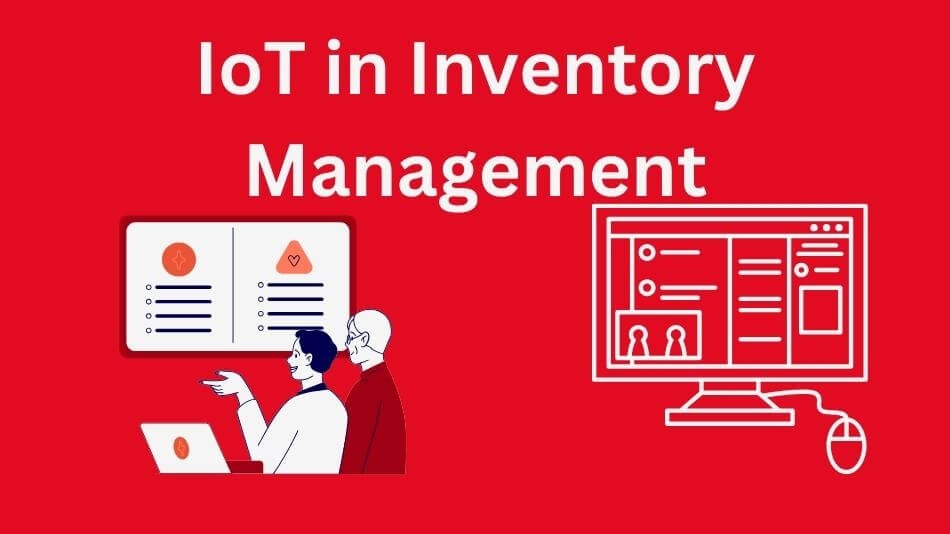Introduction

As business and technology become increasingly intertwined, IoT (Internet of Things) technology and inventory management systems have emerged as game-changers that promise to streamline operations, enhance efficiency, and cut costs.
IoT inventory management is more than a fad; it’s an incredible game-changer that empowers businesses to gain complete control of their inventory for the first time.
In this article, we will dive deeper into IoT in inventory management – its concepts, applications, benefits, challenges, and more will all be explored thoroughly.
Understanding IoT in Inventory Management
What is IoT in Inventory Management?
IoT in inventory management integrates IoT devices and technologies to monitor, track, and optimize the storage and movement of products and materials within a supply chain.
It uses sensors, data analytics, and connectivity to gain real-time insights into inventory levels, locations, and conditions.
Why is IoT Important in Inventory Management?
IoT plays a pivotal role in inventory management by providing real-time data that allows businesses to make informed decisions.
It enables businesses to prevent stockouts, reduce overstock, and improve overall supply chain efficiency.
The ability to monitor inventory remotely and in real time is a game-changer for modern businesses.
The Key Components of IoT in Inventory Management
Sensors and Devices
IoT devices, such as RFID tags, GPS trackers, and temperature sensors, are the backbone of inventory management.
These sensors gather data on the location, condition, and movement of products.
Connectivity
Connectivity is essential for transmitting data from sensors to central systems. Wireless technologies, such as Wi-Fi, Bluetooth, and cellular networks, are commonly used in IoT inventory management.
Data Analytics
Data analytics tools process the information sensors collect, providing insights into inventory trends, demand forecasting, and performance analysis.
Cloud Computing
Cloud-based solutions store and process data, making it accessible from anywhere and ensuring scalability for growing businesses.
The Benefits of Implementing IoT in Inventory Management
Enhanced Visibility
IoT provides real-time visibility into inventory levels, enabling businesses to make data-driven decisions and respond to supply chain challenges promptly.
Optimized Inventory Control
With IoT, businesses can reduce excess stock, minimize stockouts, and improve inventory turnover, ultimately saving costs.
Improved Accuracy
Manual data entry errors are minimized with automated IoT systems, ensuring data accuracy.
Streamlined Supply Chain
IoT streamlines the entire supply chain process, from warehousing to distribution, making it more efficient and cost-effective.
Predictive Maintenance
IoT-enabled sensors can predict equipment failures, reducing downtime and maintenance costs.
Challenges and Considerations
Security Concerns
IoT devices can be vulnerable to cyberattacks, making robust security measures crucial.
Initial Investment
Implementing IoT in inventory management may require a significant upfront investment in devices and systems.
Integration with Legacy Systems
Adapting existing systems to work seamlessly with IoT technology can be challenging.
Data Overload
The abundance of data generated by IoT devices can be overwhelming without proper data management and analytics.
Frequently Asked Questions

Q1: How does IoT improve inventory accuracy?
A: IoT devices track inventory levels in real time, reducing manual errors and providing accurate data.
Q2: Can small businesses benefit from IoT in inventory management?
A: Yes, IoT solutions can be tailored to the scale and needs of small businesses, improving efficiency and competitiveness.
Q3: What is the role of data analytics in IoT inventory management?
A: Data analytics processes data collected by IoT devices to provide actionable insights, enabling informed decision-making.
Q4: Are there any regulatory concerns related to IoT and inventory management?
A: Depending on your industry, there may be regulations governing data privacy and security, so compliance is essential.
Q5: How can businesses protect their IoT inventory management systems from cyber threats?
A: Robust cybersecurity measures, regular updates, and employee training can safeguard IoT systems from cyberattacks.
Conclusion

IoT in inventory management is an impressive technological feat that could transform how businesses manage their inventory.
Thanks to improved visibility, optimized control, and data-driven decisions being possible through IoT implementation, modern businesses must integrate it as part of their inventory management strategies or risk losing out to their competition.
Though IoT may present challenges, its benefits far outweigh them, making IoT inventory management an effective strategy for businesses looking to remain competitive in an ever-evolving world. Adopt it and watch your inventory management skyrocket!
